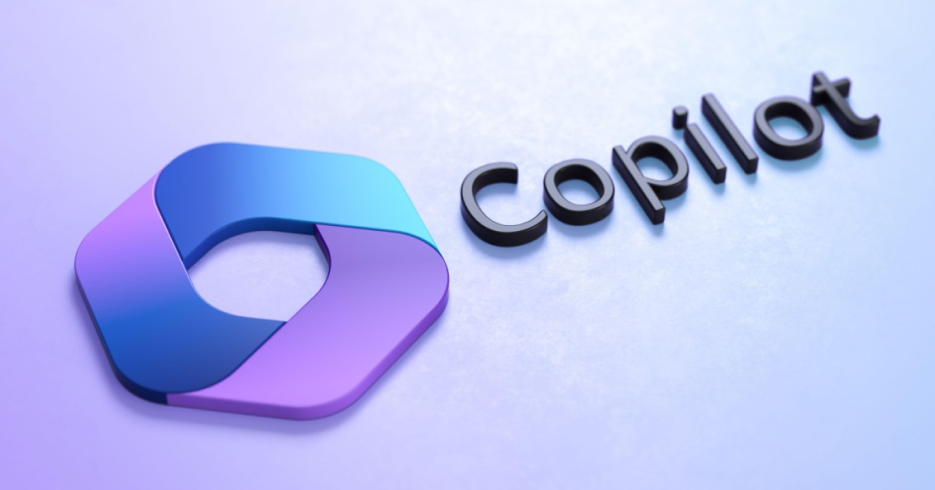Microsoft 365 Copilot, a transformative tool, combines GPT-4 and other large language models with your business information to provide immediate AI assistance across applications. The tool seamlessly integrates with Word, Excel, PowerPoint, Outlook, and Teams, empowering users to write emails, create presentations, generate reports, and translate languages. Copilot’s capabilities extend beyond these functions, offering smart document assistance and individual-specific suggestions based on your work patterns, opening up a world of possibilities for your daily workflow.
While you might already be familiar with Microsoft Copilot AI for regular tasks, its hidden features are designed to increase your efficiency significantly. The tool’s user-centric design is evident in its ability to turn Word documents into attractive PowerPoint presentations with a single command, analyse data and create charts in Excel, and enhance your Outlook experience with email summaries and response suggestions. For teams users, Copilot provides live meeting recaps, notes, and agenda creation, all aimed at making your work life easier and more productive.
The Evolution of AI in the Microsoft Workplace
Microsoft’s AI solutions have transformed how employees interact with technology in the workplace. Over the last six months, global knowledge workers have doubled their use of generative AI, and now, 75% use it daily.
From manual workflows to AI-assisted productivity
Office work used to involve time-consuming, repetitive tasks. AI-powered tools now automate routine activities that let employees solve problems creatively. Users say AI saves them time (90%), helps them focus on vital work (85%), and makes their jobs more enjoyable (83%). Microsoft Teams power users used Copilot to summarise 8 hours of meetings in just one month. This shows a radical shift from manual note-taking to AI-assisted documentation.
What is Microsoft Copilot, and how does it work with LLMs?
Microsoft Copilot is an AI-powered assistant that merges with Microsoft 365 applications to boost productivity. Copilot’s core functions:
- Coordinates large language models (LLMs), including GPT-4
- Processes natural language prompts to generate contextual responses
- Works within familiar applications like Word, Excel, PowerPoint, Outlook, and Teams
Copilot orchestrates these powerful language models to understand and respond to user requests. The system combines pre-trained models with organisational data to provide tailored assistance. Users receive contextually relevant outputs that match their specific work needs. For example, an operations manager might ask Copilot to create a job description with different qualifications.
Microsoft Graph’s role in contextual AI responses
Microsoft Graph acts as the foundation for Copilot’s contextual understanding. This technology links business data across Microsoft 365 services to give Copilot vital context for accurate responses. Copilot accesses information from emails, documents, chats, and meetings that users can view. This means that Copilot doesn’t just respond to your prompts; it understands the context of your work and can provide more relevant and useful assistance.
The Graph API brings context-aware features to every prompt, boosting search relevance through advanced lexical and semantic understanding [3]. Copilot only shows organisational data that users can access, which maintains security boundaries.
How Microsoft 365 Copilot Enhances Daily Workflows
Microsoft 365 Copilot revolutionises everyday workflows by naturally integrating AI capabilities into familiar Office applications. This tool helps professionals deal with information overload and simplifies routine tasks, allowing them to focus on higher-value work.
Summarising long email threads in Outlook Copilot
Email overload creates a significant productivity challenge. Professionals receive up to 120 emails daily and spend about 28% of their workday reading and responding to messages. Microsoft’s data shows heavy users get up to 250 emails per day. Outlook Copilot makes this easier by scanning email threads to spot key points and creating quick summaries at the top of conversations.
The feature works with a simple click on “Summary by Copilot” at the top of an email thread. Each summary has numbered citations that link directly to the source email when clicked. Users can quickly learn essential information on any device since this works on all Outlook platforms—web, desktop, iOS, and Android.
Generating presentations from Word docs in PowerPoint
PowerPoint Copilot simplifies one of the most time-consuming tasks: creating presentations. Users don’t need to start from scratch anymore. They can turn their existing Word documents into well-designed slide decks.
Real-time Q&A from meeting transcripts in Teams
Teams Copilot enhances meeting experiences by letting participants ask questions about meeting content as it happens. The system starts working once transcription begins. It can summarise key points, spot areas of agreement or conflict, and recommend action items.
Copilot sends a prompt near the scheduled end time to help wrap up meetings efficiently. It answers specific questions like “What ideas were discussed?” by looking at both spoken content and chat messages. The system also lets you search meeting transcripts for information about specific topics, questions, or assigned tasks.
Empowering Teams with Copilot Studio and Sales Tools
Microsoft’s ecosystem provides powerful tools for creating custom AI solutions beyond standard Office apps. Copilot Studio lets organisations build their AI agents, while Copilot for Sales reshapes how sales teams work.
How to use Microsoft Copilot Studio to build custom agents
Copilot Studio allows anyone to create customised AI agents through a low-code/no-code interface. You can access Copilot Studio through Microsoft Teams or build your first agent at copilotstudio.microsoft.com. The platform guides you through the process of designing conversation flows and connecting to over 1,500 data sources. Your agents can work across Teams, SharePoint, websites, and social media. This means that even if you’re not a developer, you can leverage the power of AI to create custom solutions for your specific business needs.
Microsoft documentation outlines these steps to create a custom agent:
- Defining your agent’s purpose and scope
- Building topics and conversation flows
- Connecting knowledge sources from Microsoft Graph, websites, or internal databases
- Testing and refining responses
- Publishing to your desired channels
Copilot for Sales: AI-driven CRM and email automation
Copilot for Sales combines Microsoft 365 with your CRM system to boost productivity throughout the sales cycle. The tool merges with Dynamics 365 Sales and Salesforce and brings sales insights directly into Outlook and Teams. This means that sales professionals can spend less time on administrative tasks and more time engaging with customers, leading to more effective sales processes and better customer relationships.
The key features include email assistance that writes contextual responses using CRM data, automatic meeting summaries with action items, and smart CRM updates without switching apps. The tool also provides live call insights during Teams meetings and highlights competitor mentions while suggesting relevant talking points.
Use case: Sales team efficiency improvement with Copilot
The AI assistant handles routine tasks like summarising emails, updating CRM, scheduling meetings, and following up. This automation saves time and lets sellers build relationships instead of doing administrative work. Sales professionals now spend more time prospecting and closing deals than entering data and taking meeting notes.
AI keeps changing workplace productivity, and Microsoft Copilot helps your team pioneer this transformation. Our Managed IT team can help you learn about Microsoft 365 Copilot and set it up for your business. The right strategy enables you to tap into new levels of efficiency. Your team can focus on creative, high-value work instead of routine tasks. Contact us here.
The future of work isn’t about doing more, it’s about working smarter. Microsoft Copilot helps you achieve exactly that.
Frequently Asked Questions
How does Microsoft Copilot enhance productivity in the workplace?
Microsoft Copilot significantly boosts productivity by automating routine tasks, assisting with content creation, and helping users make sense of large amounts of data. This allows employees to focus on higher-value work and creative problem-solving.
What are some key features of Microsoft Copilot in different applications?
In Outlook, Copilot can summarise long email threads. In PowerPoint, it can generate presentations from Word documents. Teams users benefit from real-time Q&A during meetings and automated meeting summaries. Copilot also integrates with CRM systems to enhance sales processes.
Can Microsoft Copilot be customised to meet specific business needs?
Yes, Microsoft Copilot Studio allows organisations to build custom AI agents using a low-code/no-code interface. These agents can be tailored to specific business requirements and deployed across various channels, including Teams, SharePoint, and websites.
What are the limitations of Microsoft Copilot?
Copilot operates within existing security frameworks and only accesses data that users can view. It has limitations in processing capacity (about 1,500,000 words per query) and time-based restrictions on data access. Some features are also application-specific, such as working only with primary mailboxes in Outlook.
How can businesses maximise their return on investment with Microsoft Copilot?
To maximise ROI, businesses should conduct thorough technical readiness assessments, implement a phased rollout approach, establish regular access reviews, collect continuous user feedback, and evaluate concrete metrics like time saved. Proper configuration and governance setup are also crucial for optimal implementation.



